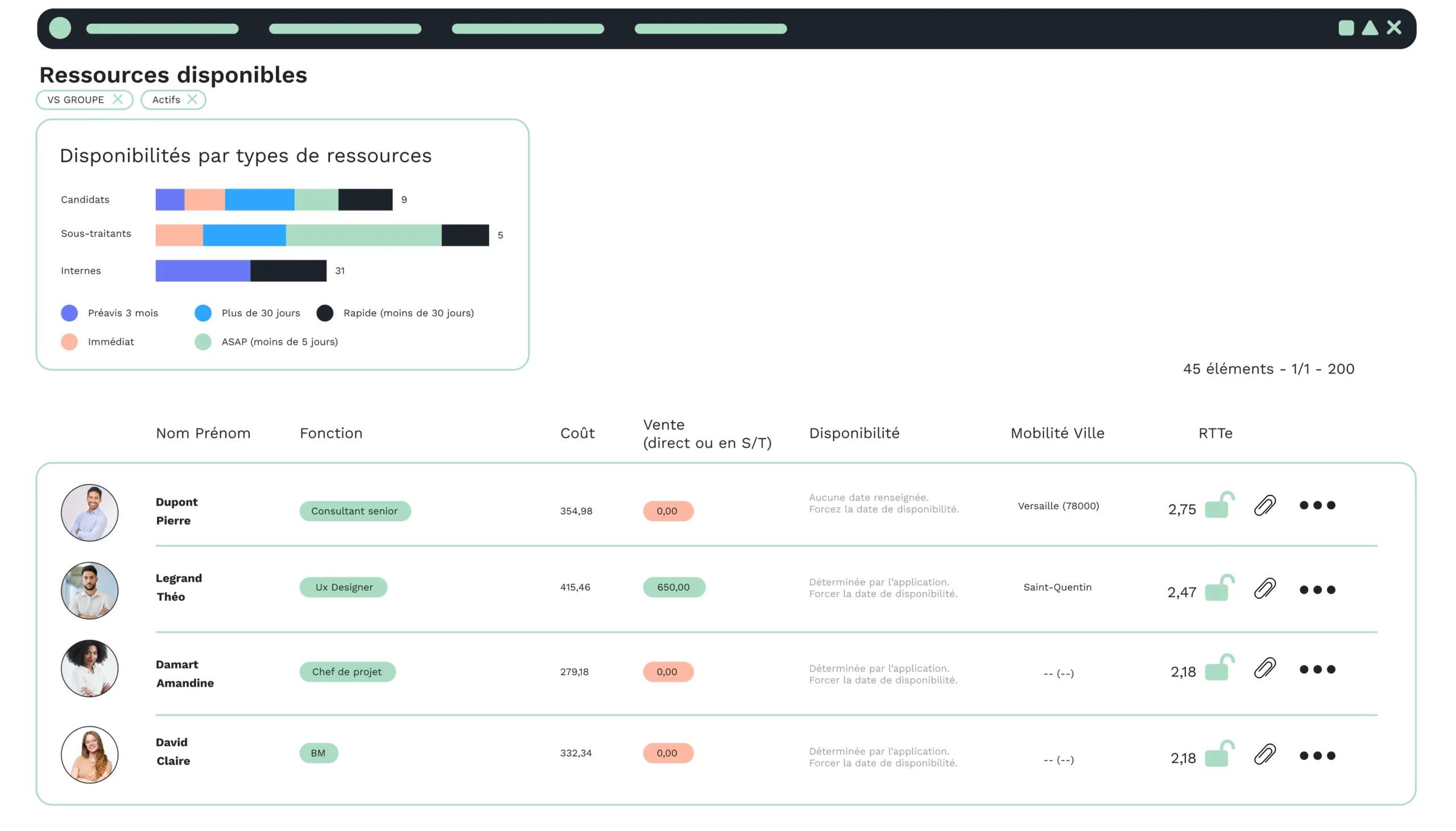Good cash management encourages IT services companies’development (investment, placement, etc.). Good cash management is essential to the survival of your business. Here are a few points to follow for good cash management.
1. Drawing up a forward plan
To draw up a provisional budget, you need to take into account your ecosystem and your activity. Having a global vision of your budget in the short and long term enables you to anticipate expenses and unforeseen events.
The COVID-19 crisis is a perfect example. As a result of the confinement, companies are seeing their business decline, and despite the aid offered by the government, decision-makers will have to carefully manage their cash flow to avoid going out of business.
Some planned investments will have to be postponed to compensate for the loss of business.
With VSA, you can draw up and monitor your projected budget for a given entity or financial year.
How to draw up a budget with VSA?
- Open the
- Go to Financial management > Budget preparation
This page consists of the following elements:
- A header that reminds you of the budget calendar you’ve previously set up, as well as any guidance notes and useful documents that may have been attached.
- An entry table for entering, updating and consulting budgets currently being entered or validated.
- Each budget value is at the granularity expected for good budget entry: by account, by entity (company, BU, etc.) and by month.
Several actions are then possible:
- Mass-load budgets using an Excel sheet.
- View the history of modifications made to the entry.
- Mass modify budget amounts for several items and a range of months.
- Delete (reset to 0) amounts entered for several items and a range of months.
- Modify the amount for the item and month of the cell concerned
- Delete (reset to 0) the amount entered.
You can load your budgets :
- Retrieve the list of available budget items,
- Retrieve the Excel template file,
- Send us your Excel file enriched with your budgets.
2. Monitor indicators
To anticipate working capital requirements, you need to monitor key cash flow indicators.
VSA enables you to analyze and anticipate the state of your cash flow through reporting. You have all the KPIs you need to make the right decisions.
In fact, VSA will gather information from the invoicing, purchasing and HR modules to give you the current state of your cash flow. You’ll get an overview of the following elements:
- Customer movements (credit notes, invoices, etc.)
- Supplier movements (credit notes, invoices, etc.)
- HR movements (salaries, charges, bonuses, etc.)
- VAT (output tax payable, output tax deductible)
3. Remedy late payments
Late payments can seriously damage a company’s solvency.
If a company doesn’t receive regular payments from its customers on time, it won’t be able to invest, pay its employees, and so on.
Whether in the form of a table or a graph, VSA enables you to quickly identify customers who are overdue on their invoices, and then send out reminders.
With VSA, you can create formal reminders by e-mail or post to the customers concerned, based on message templates. A reminder automatically includes a statement of outstanding invoices and duplicates of the invoices concerned. Dunning can be done en masse. You can also simply reference simpler reminder actions by entering a free note or referencing that a phone call has been made.
You have a history to keep track of your actions.
4. Did you say factoring?
Factoring is a solution increasingly used by companies.
If a company chooses to use a factor, it will transfer customer invoices to the factor every month, so that it can access cash quickly without waiting for them to fall due.
The factor, a financial organization, takes charge of everything connected with these invoices: follow-up, dunning, collection, and even bearing the risk of non-payment if necessary.
VSA features a new function that automates factoring. See related article
Now you have all the keys you need for effective cash management.
While you’re here, take advantage of a free, no-obligation trial of our software – it’s always better to test after all.
Read also







